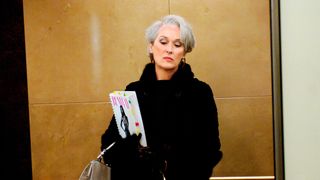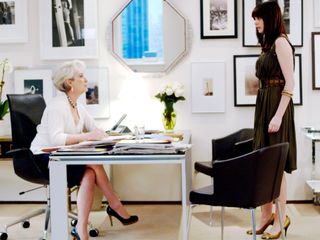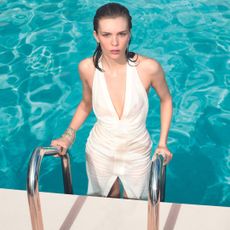This simple office hack will apparently increase your productivity
So says science…

So says science…
Words by Rob Wile From the editors at MONEY
You've probably heard of circadian rhythms, the natural body cycles that help us to do things like fall asleep at nighttime and be active during the day.
Now, a group of researchers are working to manipulate those rhythms to make us more productive at work.
‘Clients are increasingly requesting and expecting lighting systems and applications that can support human health and well-being,’ Mariana Figueiro and Mark Rea, professors at the Lighting Research Centre at Rensselaer Polytechnic Institute, wrote in Architectural Lighting recently.
The issue is critical, because according to the Environmental Protection Agency, humans in modern cities spend upwards of 90 percent of their lives indoors.

Multiple tests now show that humans are particularly sensitive to blue light — basically, the main colour we see when we're outdoors. Blue's main effect is to suppress melatonin, the brain chemical that can make us feel sleepy.
Marie Claire Newsletter
Celebrity news, beauty, fashion advice, and fascinating features, delivered straight to your inbox!
As Scientific American noted in November, a 2011 investigation by Christian Cajochen, the head of the Centre for Chronobiology at the University of Basel, found that volunteers exposed to blue-based, LED-backlit computers for five hours in the evening ‘produced less melatonin, felt less tired, and performed better on tests of attention than those in front of a fluorescent-lit screen of the same size and brightness.’
Researchers are thus increasingly advising office designers to include as much daylight-like blue in their offices as possible.

In order to promote our natural cycles, ‘one should keep exposure to light at night as short as possible, as dim as possible, and as warm or red as possible,’ Steven Lockley, an associate professor of medicine in the division of sleep medicine at Harvard Medical School and at Brigham and Women’s Hospital in Boston, said to Architectural Lighting.
Lockley however reached out to MONEY to explain that his advice ‘only applies to light at night if people are trying to sleep at night – it does not apply to people trying to work at night.’ Lockley is firmly against the usage of red lights during the night shift, stating it's ‘potentially dangerous to appear to recommend approving use of red or red-enriched light for night-shift workers, making them more sleepy and more likely to have accidents.’
Other research indicates that red lights improve the moods of nighttime workers and might not have the negative effects on workers that white light does. Some researchers endorse the use of amber glasses and amber or red lighting as beneficial for night-shift workers.

If there's one thing that's clear, it's that light should be kept to a minimum when people are sleeping, and if there must be some light during sleeping hours, make it red. As the American Medical Association has concluded, ‘exposure to excessive light at night, including extended use of various electronic media, can disrupt sleep or exacerbate sleep disorders, especially in children and adolescents.’
‘This effect can be minimised by using dim red lighting in the nighttime bedroom environment,’ the AMA stated.
The leading destination for fashion, beauty, shopping and finger-on-the-pulse views on the latest issues. Marie Claire's travel content helps you delight in discovering new destinations around the globe, offering a unique – and sometimes unchartered – travel experience. From new hotel openings to the destinations tipped to take over our travel calendars, this iconic name has it covered.
-
 Taylor Swift’s reference to this London pub has caused huge demand for merch
Taylor Swift’s reference to this London pub has caused huge demand for merchSurprise, surprise
By Iris Goldsztajn
-
 The sweet detail you may have missed in Prince Louis' surprise birthday portrait
The sweet detail you may have missed in Prince Louis' surprise birthday portraitAdorable.
By Jadie Troy-Pryde
-
 Here's what I'm buying from the Victoria Beckham X Mango collection
Here's what I'm buying from the Victoria Beckham X Mango collectionWear it like Beckham
By Penny Goldstone